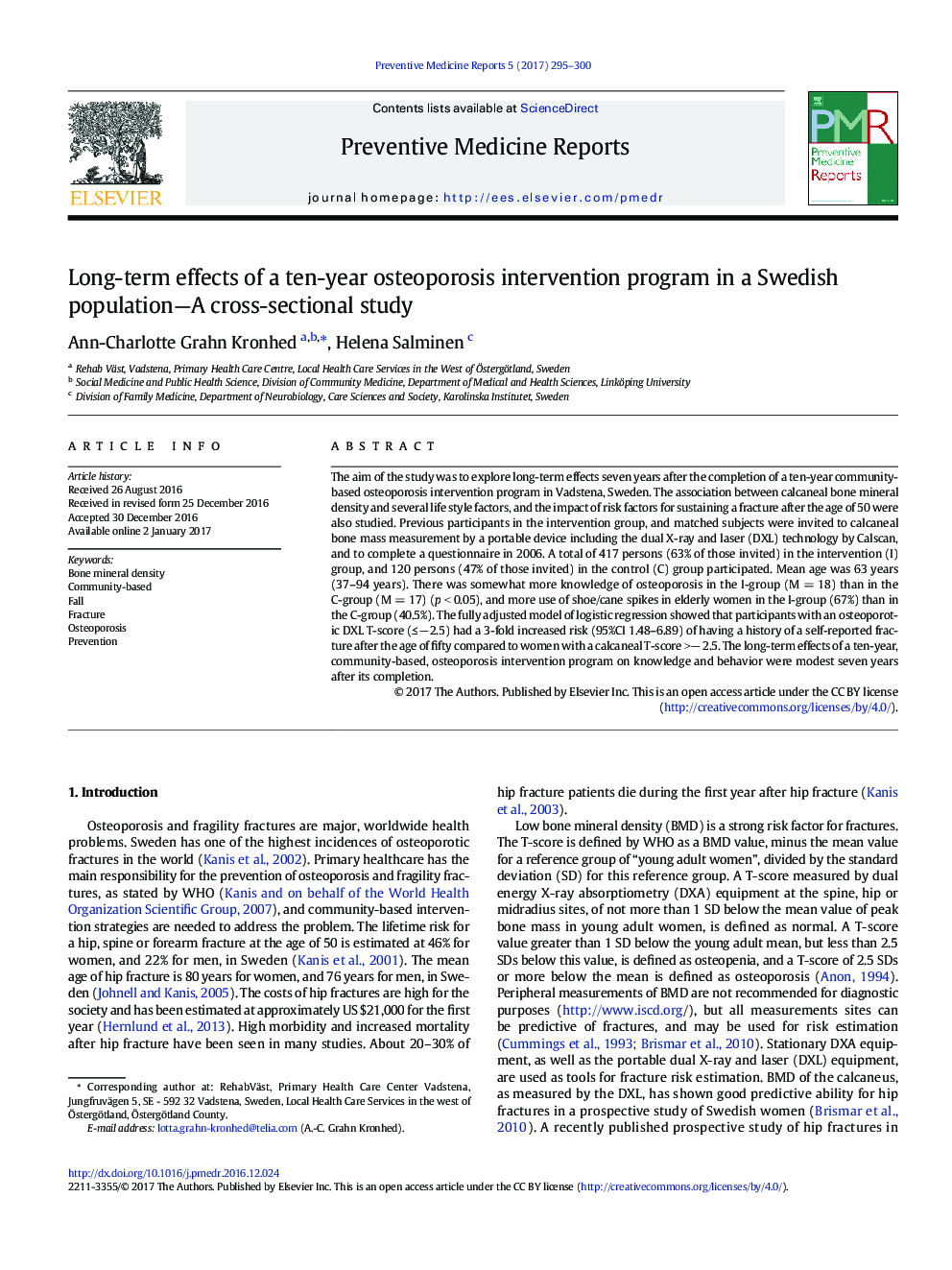| Article ID | Journal | Published Year | Pages | File Type |
|---|---|---|---|---|
| 5723787 | Preventive Medicine Reports | 2017 | 6 Pages |
â¢The effect of community-based osteoporosis intervention seems modest in the long run.â¢Elderly women were compliant with fall prevention advice using spikes in winter.â¢An osteoporotic calcaneal T-score may imply increased risk for fracture.â¢Moderate/high physical activity was positively associated with calcaneal BMD in men.â¢Brisk walks in the summer were positively associated with calcaneal BMD in women.
The aim of the study was to explore long-term effects seven years after the completion of a ten-year community-based osteoporosis intervention program in Vadstena, Sweden. The association between calcaneal bone mineral density and several life style factors, and the impact of risk factors for sustaining a fracture after the age of 50 were also studied. Previous participants in the intervention group, and matched subjects were invited to calcaneal bone mass measurement by a portable device including the dual X-ray and laser (DXL) technology by Calscan, and to complete a questionnaire in 2006. A total of 417 persons (63% of those invited) in the intervention (I) group, and 120 persons (47% of those invited) in the control (C) group participated. Mean age was 63 years (37-94 years). There was somewhat more knowledge of osteoporosis in the I-group (M = 18) than in the C-group (M = 17) (p < 0.05), and more use of shoe/cane spikes in elderly women in the I-group (67%) than in the C-group (40.5%). The fully adjusted model of logistic regression showed that participants with an osteoporotic DXL T-score (â¤â 2.5) had a 3-fold increased risk (95%CI 1.48-6.89) of having a history of a self-reported fracture after the age of fifty compared to women with a calcaneal T-score >â 2.5. The long-term effects of a ten-year, community-based, osteoporosis intervention program on knowledge and behavior were modest seven years after its completion.
